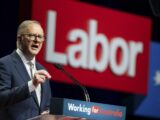
UK Economy Logs Unexpected Growth In Q2
August 18, 2023The UK economy logged a surprise growth in the second quarter as the fall in net trade was offset by the growth in household spending and government consumption.
In the second quarter, gross domestic product registered a sequential growth of 0.2 percent, following a 0.1 percent rise in the previous quarter, the Office for National Statistics reported Friday. Economists were looking for stagnation in the second quarter.
However, the level of quarterly GDP was 0.2 percent below its pre-coronavirus level in the fourth quarter of 2019.
On a yearly basis, GDP rose 0.4 percent in the second quarter, which was bigger than economists’ forecast of 0.2 percent.
In June, GDP expanded 0.5 percent, in contrast to the 0.1 percent fall in May. The pace far exceeded the 0.2 percent growth expectations.
Year-on-year, the UK economy rebounded 0.9 percent after shrinking 0.3 percent in May. The rate was also above economists’ forecast of 0.5 percent.
Capital Economics’ economist Ruth Gregory said the resurgence in activity is unlikely to last. With much of the drag from higher interest rates still to come, the economist expects the UK to enter a mild recession later this year.
All three main sectors on the production side expanded in the second quarter, ONS data showed. Services output rose only 0.1 percent, the same rate as seen in the first quarter.
Underpinned by manufacturing, industrial production advanced 0.7 percent, following 0.1 percent growth in the preceding period. Manufacturing output logged a robust growth of 1.6 percent, driven by transport equipment.
At the same time, construction output climbed 0.3 percent, after rising 0.4 percent a quarter ago.
On the expenditure-side, increases in household and government spending were partially offset by a decrease in the net trade volume.
Household spending climbed 0.7 percent following no growth in the preceding quarter. The increase in government consumption came in at 3.1 percent.
Data showed that gross fixed capital formation showed nil growth after rising 2.4 percent a quarter ago. Business investment increased 3.4 percent, driven by increased transport investment, in particular on aircraft.
Another data from the ONS showed that the visible trade deficit narrowed more-than-expected to GBP 15.5 billion from GBP 18.4 billion in May. The deficit was forecast to fall to GBP 16.2 billion.
The trade in services showed a surplus of GBP 10.66 billion compared to GBP 10.75 billion in the previous month.
As a result, the total trade balance posted a shortfall of GBP 4.78 billion, smaller than the GBP 7.66 billion deficit seen a month ago.
The International Monetary Fund forecast the UK economy to grow 0.4 percent this year and 1.0 percent next year.
The Bank of England had projected GDP growth to be 0.5 percent this year and next, and then to ease to 0.25 percent in 2025.
Source: Read Full Article


